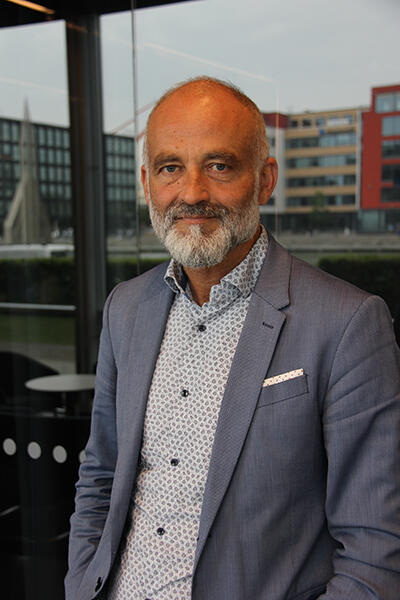Innovations, Nudging and Keys to Greater Transport Efficiency
During TREFF, the Transport Efficiency Day, it was clear that the transport sector has come a long way with sustainable innovations. But what is needed for innovations and more sustainable alternatives to become reality and to be scaled up? This is something with which Ulf Ceder, Scania and Katharina Paoli of A Win Win World have experienced.

In his presentation during TREFF, Ulf Ceder, Senior Manager at Scania, presented some of the areas with which Scania works to improve the efficiency of their transport alternatives and make them more sustainable. With all the innovation that is in progress, he thinks that it is important to work within all innovation horizons at the same time without getting caught up in a single approach.
"Those with a shorter horizon can be very beneficial here and now. We have worked with High Capacity Transport (HCT) in this respect and we have also worked with biofuel for a long time. On the medium-length horizon, for instance with electrification, we have a long way to go with solutions like electrified roads and vehicles. There is especially a need for investment in infrastructure if we are going to make it happen," says Ulf Ceder and continues.
"In the long term we have more connected solutions, autonomous vehicles and transport systems and even higher efficiency. We can already do work there, but we will not see the results until further off in the future. It is a matter of keeping all time horizons in sight."
It Takes More than Technology
There is no doubt that there are plenty of innovations that can contribute to a more sustainable transport sector – which is at the leading edge with green solutions in many respects. However, many of the speakers during TREFF expressed frustration that there was a need for better possibilities for many solutions to scale up and to make the innovations a reality. An important element of this becoming a reality is to establish regulations, standards and policies.
Ulf Ceder stresses, among other things, that there is a need for more parties to take risks and that innovation must also take place on the policy level so that it can be in step with the technological innovations.
"I think that it usually works well enough, but sometimes public authorities could be a bit more proactive. I believe in working more with policy innovation and doing so in parallel with the technology. Then it would be possible to make a great deal of progress in accelerating things," says Ulf Ceder and continues:
"Then there has to be a desire and a business model that hold up. The parties responsible for procurement processes, providing the market with vehicles and other key figures must trigger the market. Technological innovation and the desire to pay must be met."
Nudging as a Method - A Way Forward
One person who is an expert at making things happen and, in particular, getting people to act is Katharina Paoli, Managing Director at A Win Win World, who works with nudging. Nudging is a method from the behavioural sciences and comes from the word nudge - an ordinary push in the right direction. The term involves arranging choice situations so that it is made easy to make the right choice – something that can be applied to the transport sector as a whole, but also the consumer's role in the sector's development.
"There is already a great deal of work with nudging and public transportation, but nudging can absolutely play a bigger role in logistics and transport. For example, we see that an ordinary push may be needed with respect to all of the returns from E-commerce and new delivery models," says Katharina Paoli, who then responded instantly to the question of when innovation and nudging encounter each other.
"Often and willingly!"
Not Just for Individuals
In her presentation during TREFF, Katharina Paoli stressed, among other things, that there are several situations in E-commerce alone in which individuals can be guided to make a better choice for the planet's best. But in order to promote the progress towards a more effective and sustainable transport sector, companies can also be nudged.
"It can definitely be effective to nudge B2B as well. Sometimes, a supplier or customer needs a nudge to be able to ultimately influence the consumer. It works. It's all a matter of influencing individuals' choices. And if you can get a large number of individuals' behaviour headed in the right direction, that is when you can implement great systematic changes," says Katharina Paoli.
In order to be able to contribute to a systematic change within this sector, everything from usable innovations to changes by the consumers is needed. And nudging can become a very good tool to push the development, but just like Ulf Ceder's ideas relating to submission, nudging needs timing.
"In order for a nudge to be effective, it must be well-timed and lie in the interests of both the individual and society. It is a matter of first identifying the right selection of choices and designing it so that the nudge gives a friendly push that makes it easy to do what's right," says Katharina Paoli.


